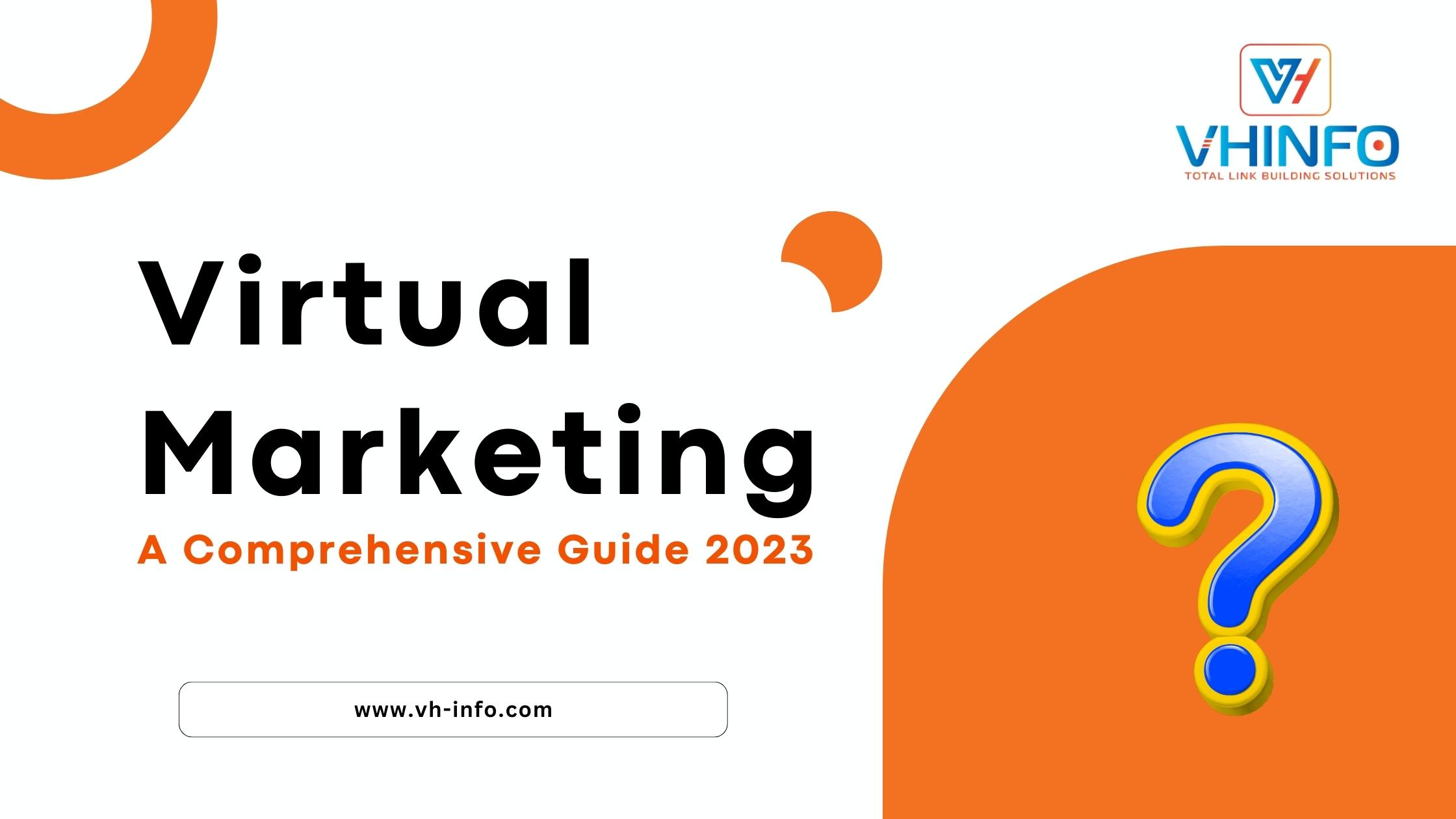The fiercely competitive online sales environment may be efficiently marketed using virtual marketing. Campaigns for virtual marketing might range from social media marketing to email marketing.
The percentage of people who regularly use the internet is greater than 50%. According to Think with Google marketing insights, 48% of customers use search engines, 33% go to brand websites, and 26% utilize mobile apps to search for products or services. These figures support the notion that marketers engage their audience through virtual marketing.
What is Virtual Marketing ?
Virtual marketing is digital marketing. It refers to marketing campaigns which are operating through particular systems, tools or software. It is an online activity. Virtual marketing involves promoting products, services or brands through different channels like websites, social media, email marketing, search engine optimization, PPC ads and other social media tactics. This activity will help you engage with your audience through online presence. It’s called virtual marketing.
Difference between Digital Marketing & Virtual Marketing
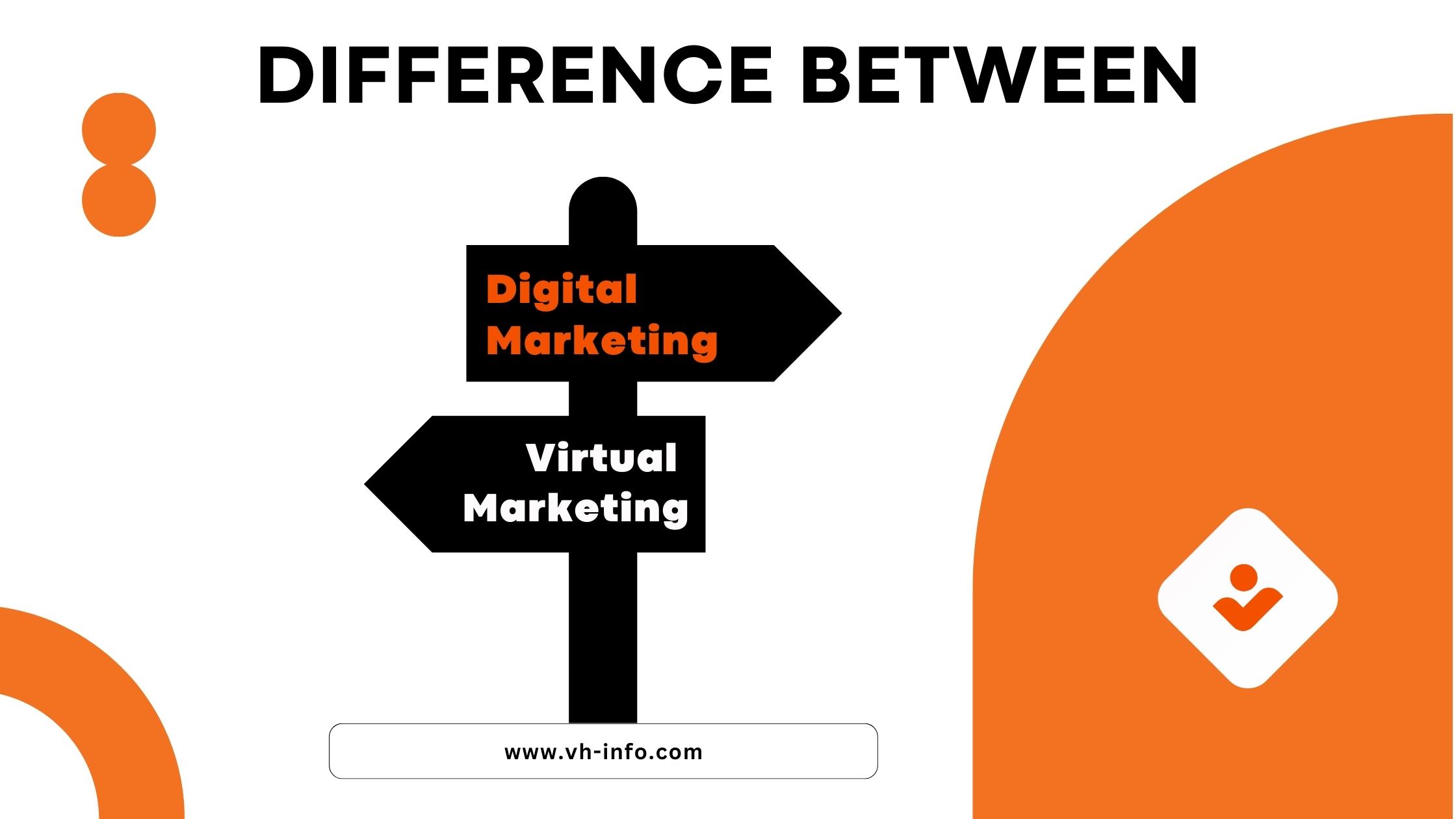
Digital marketing and virtual marketing are almost the same thing, we can say interchangeable strategies. These strategies both gather user information from internet platforms and transform the analytics into consumer-focused content. Virtual marketing may also refer more precisely to interactive online experiences that aim to include a target audience in an activity that would ideally enhance brand engagement and sales.
Why is Virtual Marketing Important ?
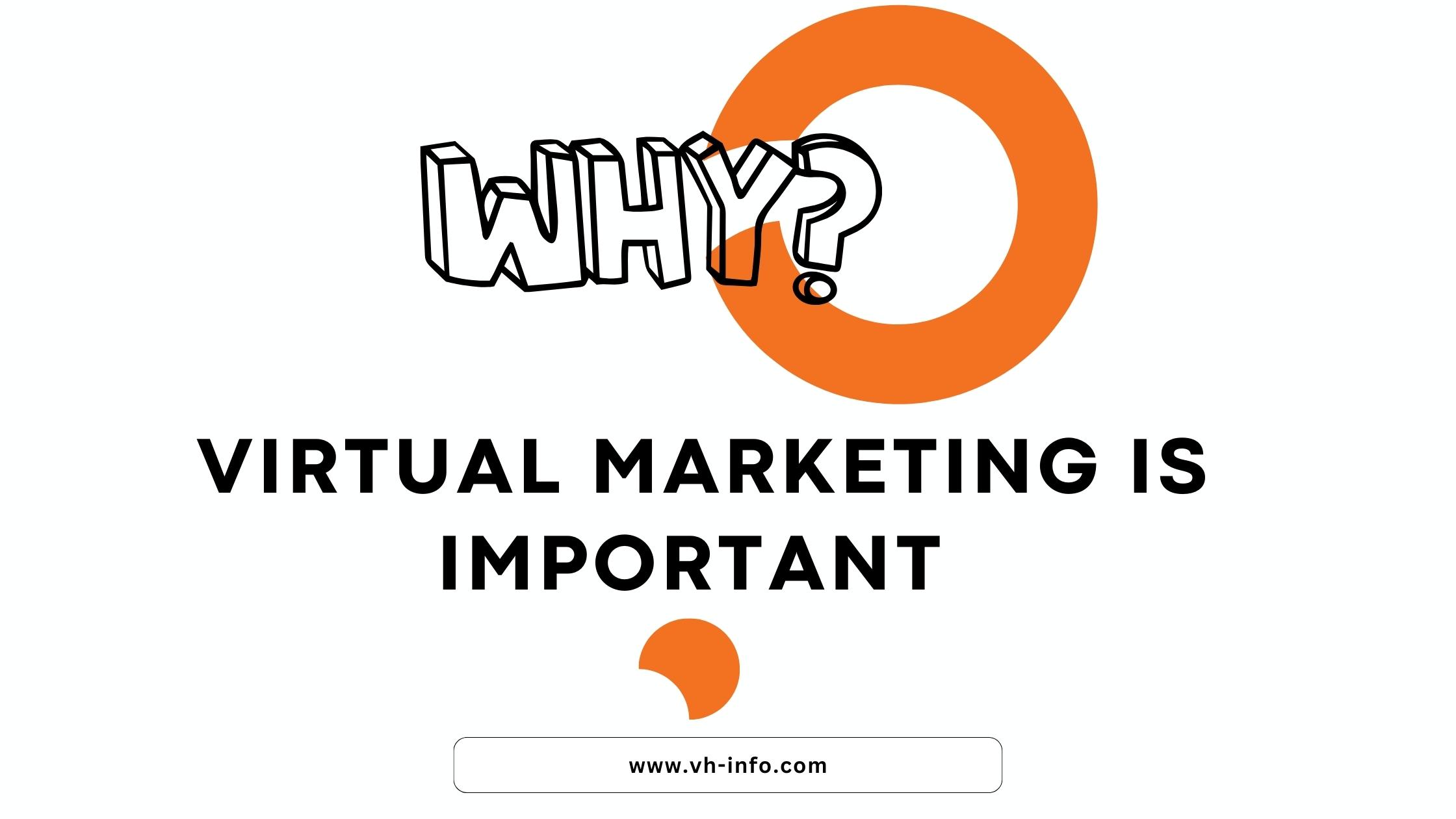
Virtual marketing is totally important because more than half of the world’s population uses the internet. Due to the fact that it allows firms in many industries to engage with their customers online, virtual marketing has become crucial.
When companies are on social media through social media marketing, on Google through SEO and PPC, on email through email marketing, and so on, it connects them with their potential consumers.
Types of Virtual Marketing
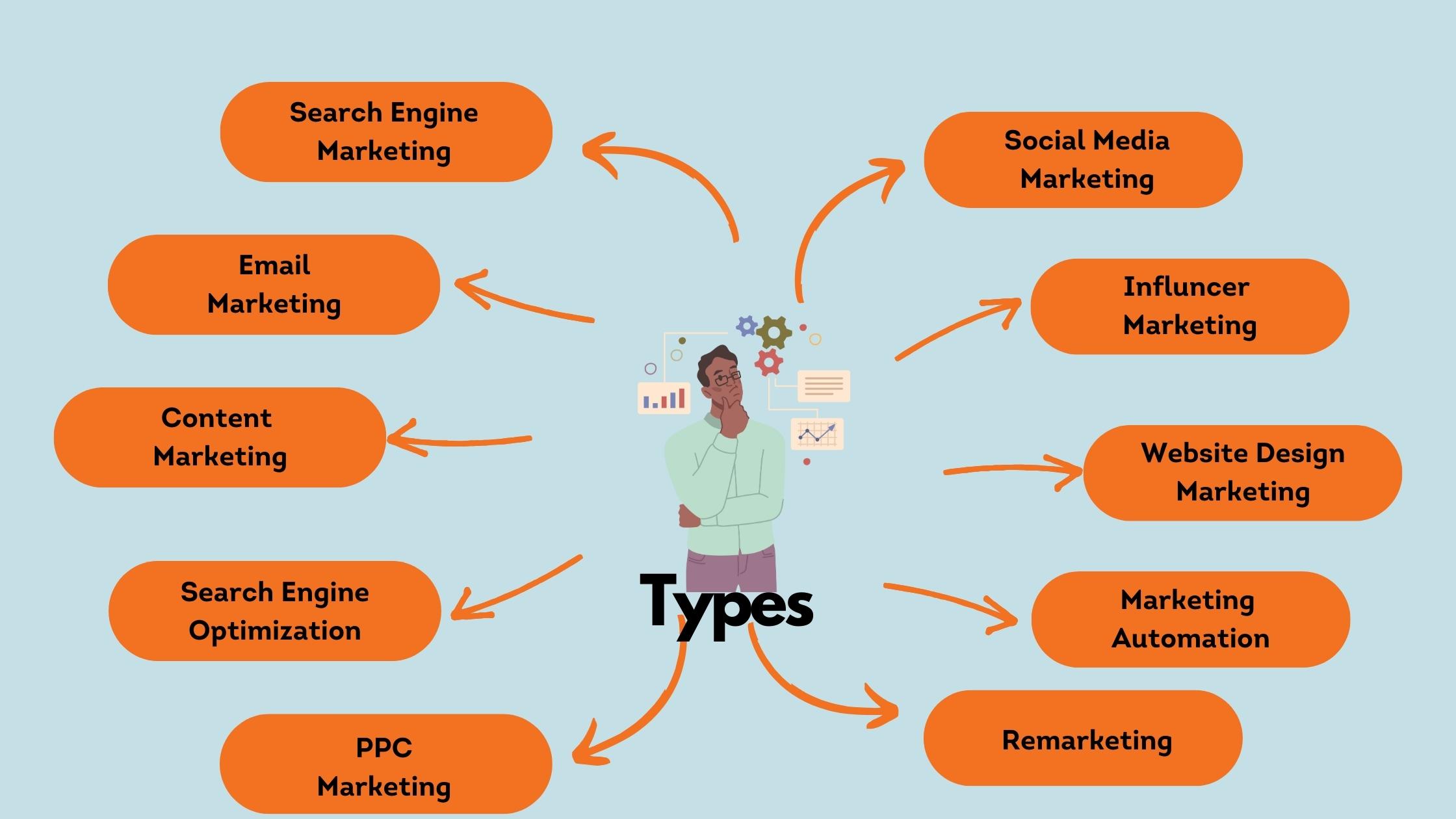
- Search Engine Marketing ( SMM )
- Email Marketing
- Content Marketing
- Search Engine Optimization
- PPC Marketing
- Social Media Marketing
- Website Design Marketing
- Marketing Automation
- Remarketing
- Influencer Marketing
1. Search Engine Marketing
SEM is a form of paid search engine virtual marketing where companies place bids on certain keywords to have their adverts appear in search engine results. It works well for boosting internet exposure and bringing targeted visitors to websites. Pay-per-click (PPC) and display advertising are both included in SEM. To maximize their reach and achieve certain objectives, such as lead generation or e-commerce sales, marketers carefully choose keywords and establish budgets.
2. Email Marketing
Sending emails to a list of subscribers or potential consumers is email marketing, a direct communication method. It’s a flexible tactic used to cultivate leads, advertise goods or services, and develop client connections. In order to engage subscribers, effective email marketing give relevant offers, personalized recommendations, and meaningful information. Businesses may segment their audience, measure open rates, click-through rates, and conversions using email marketing automation systems, which enables them to continuously improve and optimize their email campaigns.
3. Content Marketing
The main objective of content marketing is to draw in and hold the attention of a particular audience by producing and distributing good, pertinent material. Various formats for this material are possible, such as blog entries, videos, infographics, and eBooks. The objective is to build authority and trust with the target audience, which will ultimately lead to lucrative consumer action. Delivering constant, useful material that is in line with the interests and demands of potential consumers is the main objective of content marketing, which is a long-term approach.
4. Search Engine Optimization ( SEO )
SEO is the process of improving a website’s visibility and rating on search engine results pages (SERPs) by optimizing its content, structure, and other components. It includes both on-page and off-page strategies, including link building, meta tag creation, keyword research, and content optimization.
Businesses may improve their online visibility, build trust, and attract organic (non-paid) visitors with the aid of a well-executed SEO campaign. SEO is a continuous process that needs to be monitored and modified on a frequent basis to account for shifting user trends and search engine algorithms.
5. Pay-Per-Click ( PPC ) Marketing
Online marketers who use PPC marketing pay a charge each time one of their ads is clicked. This kind of marketing offers a quick approach to direct interested visitors to a website or landing page. Google Ads and Bing Ads are two common PPC advertising networks. To reach their intended demographic, advertisers set budgets, bid on keywords, and develop ad campaigns. PPC is a practical and quantifiable marketing tactic since it gives precise targeting possibilities and useful data on ad success.
6. Social Media Marketing ( SMM )
To reach a target demographic, social media marketing makes use of sites like Facebook, Instagram, Twitter, and LinkedIn. Running paid advertising campaigns, distributing content, and interacting with followers are all part of it. SMM promotes customer connections, increases website traffic, and increases brand exposure. Successful social media marketing (SMM) plans take into account the distinctive features of each social network, personalize content to the audience, and track outcomes using KPIs like engagement, reach, and conversions.
7. Website Design Marketing ( WDM )
The goal of website design and marketing is to produce intuitive, aesthetically pleasing websites that improve user experience (UX). For attracting and keeping visitors, increasing conversion rates, and projecting a strong brand identity, a website must be well-designed. Responsive design, simple navigation, quick load times, and eye-catching visual components are important WDM factors. Clear calls to action (CTAs), lead capture forms, and SEO optimization are all part of effective website design. To keep the website fresh and interesting, a continuous process responds to changing design fads, user preferences, and technology developments.
Read More : Which CMS is best For SEO?
8. Marketing Automation
The term “marketing automation” refers to the use of technology and software to organize and automate marketing duties and procedures. Businesses may use it to cultivate leads, personalize communication, and provide the appropriate message to the appropriate audience at the appropriate time.
Email marketing automation, lead scoring, customer segmentation, and campaign tracking are important aspects of marketing automation. Marketing teams may concentrate on strategy and creativity by automating monotonous processes, which will increase efficiency and return on investment. Platforms for marketing automation offer useful insights into consumer behavior, enabling data-driven decision-making and ongoing campaign optimisation.
9. Remarketing
Remarketing is a type of digital advertising that focuses on people who have already connected with a brand or visited a website but haven’t taken the desired action, such as completing a purchase. It entails serving these previous visitors targeted adverts while they surf other websites or social media networks.
Remarketing tries to re-engage potential clients and motivate them to visit the website again and make a purchase. This tactic increases the chance of conversion by taking use of the consumers’ past familiarity with and interest in the brand or items.
10. Influencer Marketing
Working with people who have a sizable and active following on social media or in particular niches is a key component of the influencer marketing approach. These influencers, who are frequently authorities or well-known figures in their industries, market goods or services to their audience. Influencer marketing helps companies become more credible, trustworthy, and real.
It might appear in a variety of ways, such as sponsored marketing articles, reviews, endorsements, or joint ventures. An effective influencer marketing plan must include the correct influencer identification, alignment with their beliefs, and campaign impact measurement. It makes use of their influence and network to raise brand awareness and cultivate deep relationships with the target market.
Benefits of Virtual Marketing
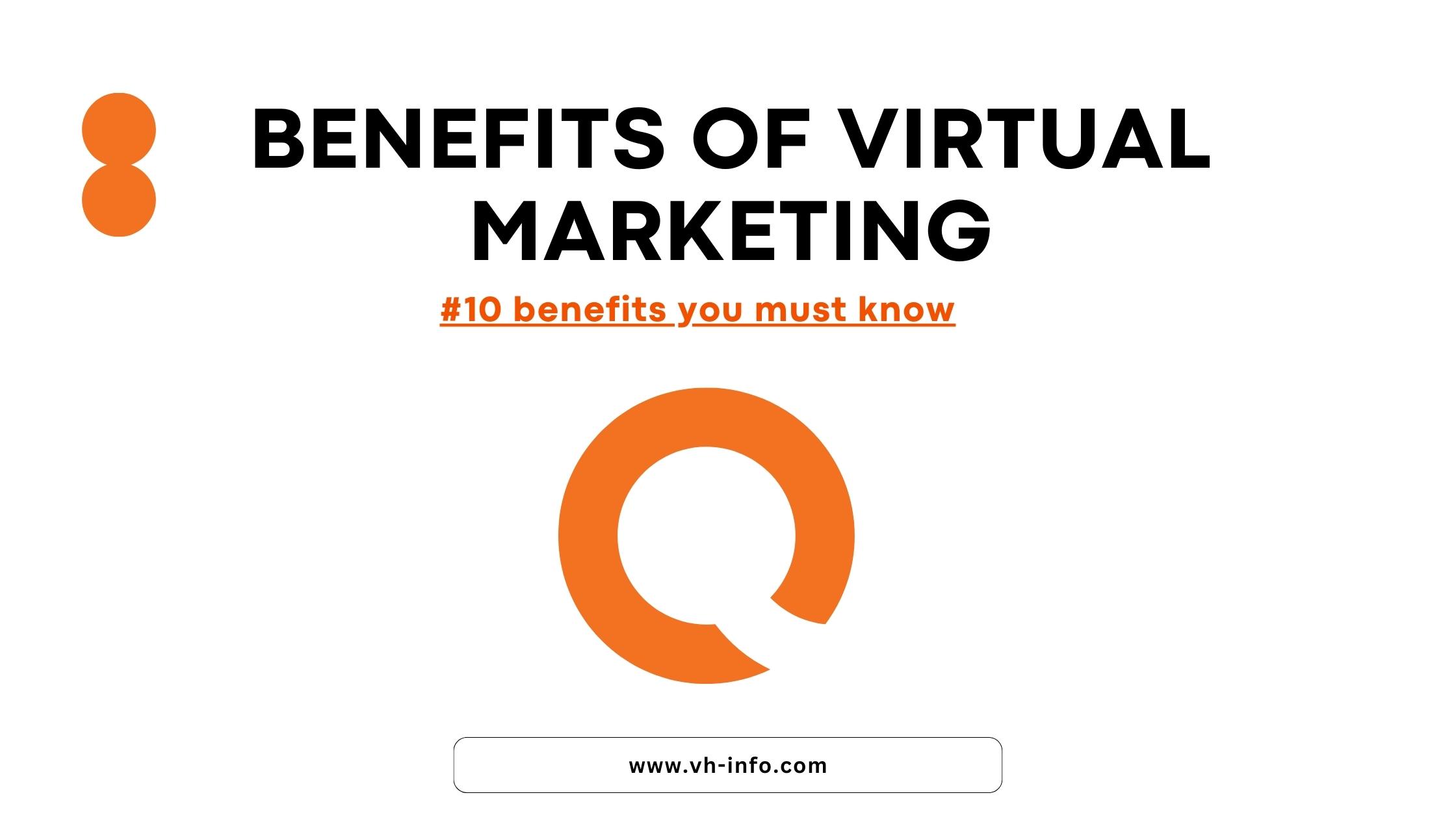
Businesses can profit from virtual marketing, which entails promoting goods, services, or brands in virtual or digital settings. The following are some of the primary advantages:
- Global Reach: Virtual marketing allows businesses to reach a global audience, breaking down geographical barriers and expanding market potential.
- Cost-Effective: It is often more cost-effective than traditional marketing methods, making it accessible to businesses of all sizes, including startups and small businesses.
- Targeted Audience: Digital marketing enables precise audience targeting based on demographics, interests, behaviors, and more, ensuring that your message reaches the right people.
- Measurable Results: Marketers can track and measure the performance of their campaigns in real-time, allowing for data-driven decision-making and continuous optimization.
- Personalization: It enables personalized marketing messages and content, enhancing the customer experience and increasing the likelihood of conversions.
- Immediate Engagement: Digital marketing channels like social media and email provide opportunities for immediate engagement and interaction with customers and prospects.
- Flexibility and Adaptability: Digital marketing campaigns can be quickly adjusted and adapted to respond to changing market conditions and consumer behavior.
- Content Marketing: Content marketing is a key component, allowing businesses to establish authority, educate customers, and build trust through valuable and informative content.
- E-commerce Integration: For businesses involved in e-commerce, virtual marketing drives traffic to online stores, increases sales, and improves customer retention.
- Competitive Advantage: Staying proficient in digital marketing provides a competitive advantage in the modern business landscape, allowing businesses to stay ahead of competitors and meet the evolving needs of consumers.
These benefits underscore the importance of incorporating virtual marketing into a comprehensive marketing strategy to effectively reach and engage with today’s digital-savvy consumers.
FAQs
Q1: what is affiliate marketing – a free virtual event ?
A1: A performance-based internet marketing method called affiliate marketing pays partners (affiliates) for directing customers to a company’s website or generating sales there. A free virtual event is one that is held online and may be accessed remotely through the internet without the requirement for physical presence.
Q2: How to hire a virtual assistant for internet marketing ?
A2: Below 3 Points are help to hire virtual assistant :
- Define Your Needs: Create a detailed list of the exact duties and obligations you want the virtual assistant to take on, such as email marketing, social media management, or SEO.
- Search and Vet Candidates: To identify possible individuals, use internet resources like virtual assistant agencies, freelance websites, and professional networks. To evaluate their abilities and experience, go through their portfolios, contact their references, and hold interviews.
- Set Clear Expectations: Establish working hours, performance standards, and communication procedures right away. For effective coordination, use collaboration tools and project management software, and make sure the virtual assistant is aware of your brand and marketing objectives.
Q3: Why is virtual reality a promising format for the future of content marketing?
A3: Since virtual reality (VR) offers immersive and interactive experiences, it holds promise for the future of content marketing because it engages audiences in distinctive and memorable ways, fosters emotional connections with brands, and offers chances for storytelling and product demonstrations that can’t be duplicated through traditional media.
Q4: How virtual reality could change content marketing ?
A4: By providing immersive and interactive experiences that engage audiences more deeply and make material more memorable, virtual reality (VR) has the potential to transform content marketing
Conclusion – A Final Call
In the end, virtual marketing includes a variety of digital methods that take use of the internet environment to efficiently reach and interact with a target audience. Each sort of virtual marketing, from search engine optimization (SEO) to social media marketing, offers particular advantages and chances for firms to interact with customers, spur development, and adjust to the changing digital world.
In today’s cutthroat company climate, where online presence and digital engagement are vital success factors, adopting virtual marketing methods is essential. For organizations hoping to succeed in the digital era as technology develops, being educated and modifying virtual marketing tactics will remain crucial.
Writer and Content Marketer
Mit Mehta is SEO & Content Planner at vh-info with 2 years experience in digital marketing industry and helping leaders showcase their brand to the correct audience. He has been a part of vh-info since 2023 and handles all the activities required to grow our brand’s online presence.

